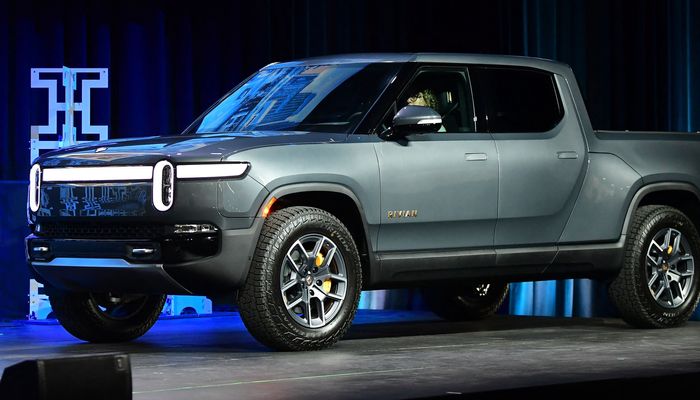David Jankowsky is among those trying to remove a major obstacle to consumer demand for electric vehicles: a lack of charging stations across rural America.
Mr. Jankowsky is chief executive of Francis Energy, a Tulsa, Okla.-based startup that has been installing fast chargers in remote areas of the Great Plains, from tribal reservations to lonely sections of Route 66. Some are in areas with hardly any electric cars on the road and receive little use.
But two forces have Francis Energy in expansion mode: Billions of dollars for charging infrastructure about to flow from Washington, and the pending rollout of several electric pickup-truck models, a body style popular in the heartland.
“Very soon, EV charging utilization is going to accelerate tremendously,” Mr. Jankowsky said.
The startup is part of a mishmash of companies, nonprofits and government agencies working to create a charging network in less-populous areas of the U.S. Without filling those voids, they say, consumers will shy away from buying electric vehicles because of concerns over road trip hassles and where to charge.
Even in dense cities with greater demand, electric-vehicle charging can be a tough business with a murky profit outlook, analysts say. Upfront capital costs, though typically subsidized with public dollars, are high. Fast chargers are considered ideal for more-remote areas because they can replenish a battery in 15 to 30 minutes rather than hours with a less-powerful charger, but a single fast charger can cost more than $100,000, according to Boston Consulting Group.
Charging companies also are constrained in setting prices. Ideally, operators want to keep rates well below the price of gasoline, which can be difficult in areas that have cheap fuel costs or high wholesale electricity prices.
The charging business requires an even bigger leap of faith in rural areas, where electric-vehicle adoption lags behind other parts of the country and operators face a longer payback period if usage rates don’t materialize as expected, analysts say.
“Operating costs are going to be a burden on operators if they don’t get enough use,” said Nick Nigro, founder of Atlas Public Policy, a Washington research firm that tracks the electric-vehicle industry.
The effort to electrify the heartland is expected to get a boost from the federal infrastructure package signed into law last month, which earmarks $7.5 billion for electric-vehicle charging, much of it to be directed to underserved and rural communities. The Biden administration in February is expected to release guidelines to help state and local governments plot where chargers should go.
“‘Our goal is that someone will be able to find a charging station available just like they would at a gas station today.’”
Much of the industry’s focus today is on expanding public charging in metropolitan areas, to help make electric vehicles more accessible for apartment dwellers or others who don’t have convenient at-home charging options. In rural areas, where at-home charging is easier, the focus is on knitting together a network of fast chargers.
In Arkansas, officials have drawn up a plan to put fast chargers every 50 miles or so across the state, so tourists and business travelers can get around without worrying about finding a place to plug in, said Becky Keogh, secretary of the Arkansas Department of Energy and Environment.
“Our goal is that someone will be able to find a charging station available just like they would at a gas station today,” she said.
Mr. Jankowsky, a Georgetown Law graduate who worked as an executive at a renewable-energy company, founded Francis Energy about five years ago. The startup tapped state funding to install a network of 550 fast chargers at roughly 50-mile intervals throughout Oklahoma.
Customers pay 32 cents a minute, which works out to around $20 to repower an electric pickup truck to an 80% charge, the company says. Mr. Jankowsky expects it will take a few years before the chargers are in use at least 5% of the time on average, a threshold needed to produce positive cash flow.

Coming electric pickup trucks from Rivian Automotive and others are bolstering the business case for fast-charging stations.
Photo: frederic j. brown/Agence France-Presse/Getty Images
“It’s a huge risk that these stations are underutilized,” Mr. Jankowsky said. “I think that’s why you don’t see a lot of people doing it, especially in the markets we’re in.”
To offset the risk, the company also is placing chargers in busier areas that should pay off more quickly, including Houston and Chicago. It also has contracts to operate stations for utilities or other third parties, a more-stable revenue source, Mr. Jankowsky said.
He is confident in the long-term economics in rural states, in part because he expects electric pickup trucks to catch on. Pickups account for one-quarter of vehicles on the road in Oklahoma, compared with 15% nationally, according to research firm iSeeCars.com
Trucks have bigger batteries, which will require longer charging sessions, Mr. Jankowsky said. And drivers generally travel longer distances in rural states, adding to demand.
Irvine, Calif.-based startup Rivian Automotive in recent months released the industry’s first electric pickup, and is building its own charging network. General Motors Co. is rolling out its first electric truck, the GMC Hummer, and plans a plug-in Silverado pickup by early 2023. Ford Motor plans to begin selling an electric F-150 pickup this spring.

Electrify America operates about 3,150 fast chargers and plans more locations in rural stretches of states including Wyoming, Montana and South Dakota.
Photo: Clark Hodgin for The Wall Street Journal
The pending truck entries also are drawing attention from Electrify America, which operates about 3,150 fast chargers across 700 U.S. stations. It plans more locations along highways across rural stretches of states including Wyoming, Montana and South Dakota, partly because of the planned electric pickups, said Rob Barrosa, the company’s senior director of business development.
Some nonprofit electric utilities also are working to provide charging spots to remote areas, said Brian Sloboda, a manager at the National Rural Electric Cooperative Association. He said rural electric companies are teaming with local governments to install chargers at state parks or roadside diners to support tourism.
“As a nonprofit, they can accept a 10- or 15-year payback period,” he said. “That’s just not going to work for a for-profit company.”
Write to Mike Colias at [email protected]
Copyright ©2021 Dow Jones & Company, Inc. All Rights Reserved. 87990cbe856818d5eddac44c7b1cdeb8








